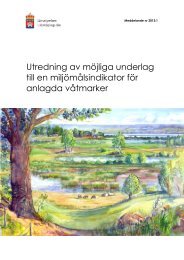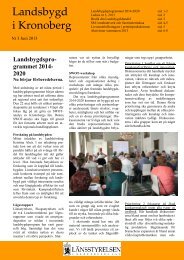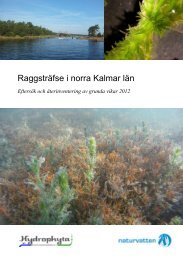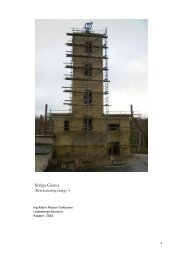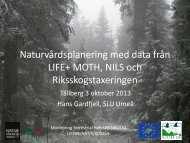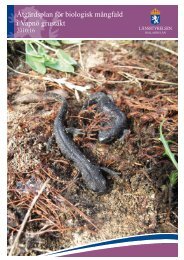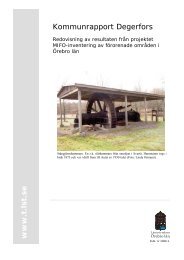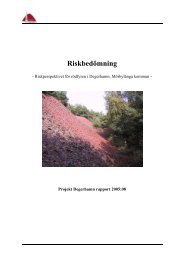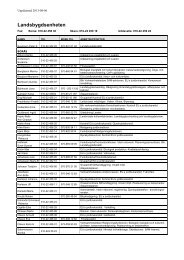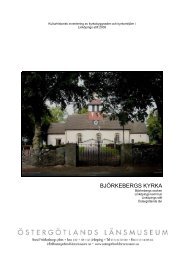Källor i Stockholms län - Inventering och underlag ... - Länsstyrelserna
Källor i Stockholms län - Inventering och underlag ... - Länsstyrelserna
Källor i Stockholms län - Inventering och underlag ... - Länsstyrelserna
You also want an ePaper? Increase the reach of your titles
YUMPU automatically turns print PDFs into web optimized ePapers that Google loves.
Summary<br />
An inventory of coldwater springs in Stockholm County:<br />
a basis for environmental quality monitoring of groundwater<br />
The County Administrative Board of Stockholm carried out an inventory of<br />
coldwater springs in Stockholm County from October 2002 to January 2003.<br />
The inventory was part of the regional environmental monitoring<br />
programme, which is run by the County Administrative Board and receives<br />
financial support from the Swedish Environmental Protection Agency.<br />
The aim of the inventory was to increase knowledge about coldwater<br />
springs in the county and to determine whether the springs were suitable<br />
objects for long-term monitoring of groundwater quality. One advantage of<br />
springs is that methods such as drilling or observation pipes are not required<br />
for environmental monitoring, and natural hydrological processes are thus<br />
not disturbed. Another advantage is that the water quality and flow are<br />
representative of a larger area, namely the entire drainage area of the<br />
springs.<br />
The inventory includes a compilation of information from earlier inventories<br />
of springs in the county, a field survey of about 70 springs and analyses of<br />
water chemistry in 19 springs. The springs that were chosen for the water<br />
analyses represent different geological environments and different levels of<br />
exposure to pollutants.<br />
Most of the springs were located in the direct vicinity of large glaciofluvial<br />
deposits (eskers), but some headsprings emerged from glacial till or seeped<br />
directly from bedrock, and some headsprings emerged from layers of sand<br />
and gravel under clay.<br />
The field survey documented the type of spring, the water flow, the geological<br />
conditions in the drainage area of the springs, and the soil characteristics<br />
in the vicinity. The data that were gathered during the survey were<br />
stored in a Geographical Information Systems (GIS) database that includes<br />
photographs of the springs.<br />
The field survey was conducted during late autumn and winter, which is the<br />
best season for identifying permanent groundwater springs. At other times<br />
of the year, it is difficult to distinguish permanent springs from temporary<br />
flows of surface water. The disadvantage of winter fieldwork was that it was<br />
not possible to survey the flora and fauna. The field survey should therefore<br />
be supplemented with a biological survey, in order to gain a complete<br />
picture of the environmental conditions in the vicinity of the springs.<br />
– 7 –



